'Sunshine' Buffet Plate by Stanley Tigerman for Swid powell, 1985 USA
'Sunshine' Buffet Plate
by Stanley Tigerman
for Swid powell, 1985 USA
This plate was designed by Stanley Tigerman, an important Chicago figure in the architectural scene. The large buffet plate named 'Sunshine' was produced in 1985 by the important post-modern goods company Swid Powell in the United States. The design features a dynamic, sun-like motif with rays emanating from the plate's center, which remains plain white, allowing the border design to truly pop. The alternating blue and orange triangular shapes create a sense of movement and visual interest, suggesting the radiance of sunshine through a playful, graphic style.This piece, with its dimensions of 1 by 12 1/8 by 12 1/8 inches, is crafted from ceramic, which is both a traditional and durable material. The use of ceramic nods to the history of plate-making, while the design is distinctively modern. The piece is part of the permanent collection at the Art Institute of Chicago, which speaks to its significance in the design world and its recognition as a work of art in its own right. The Art Institute of Chicago houses this as an example of Tigerman's multidisciplinary reach and his influence on the design aesthetic of his time.
Large buffet plate 'Sunshine' by Stanley Tigerman
Manufactured by Swid Powell, USA
Permanent collection
of the Art Institute of Chicago
1 x 12 1/8 x 12 1/8 in.
Ceramic
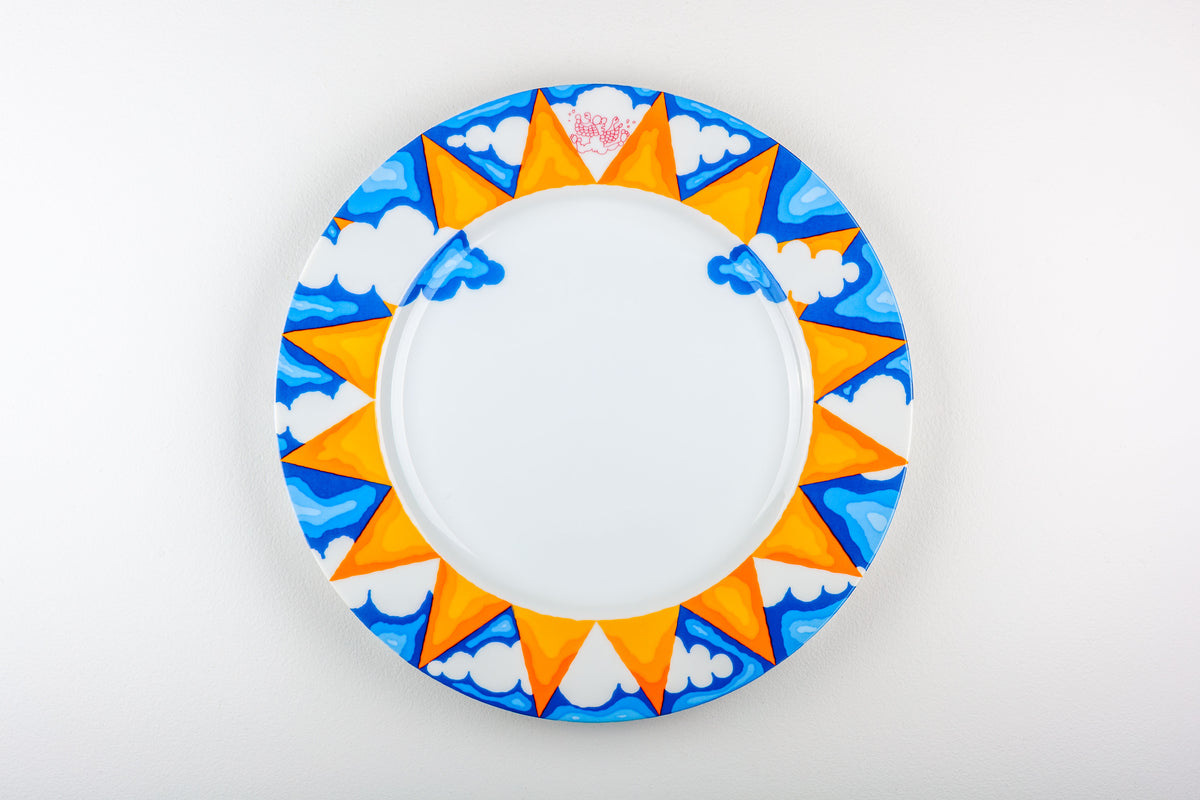
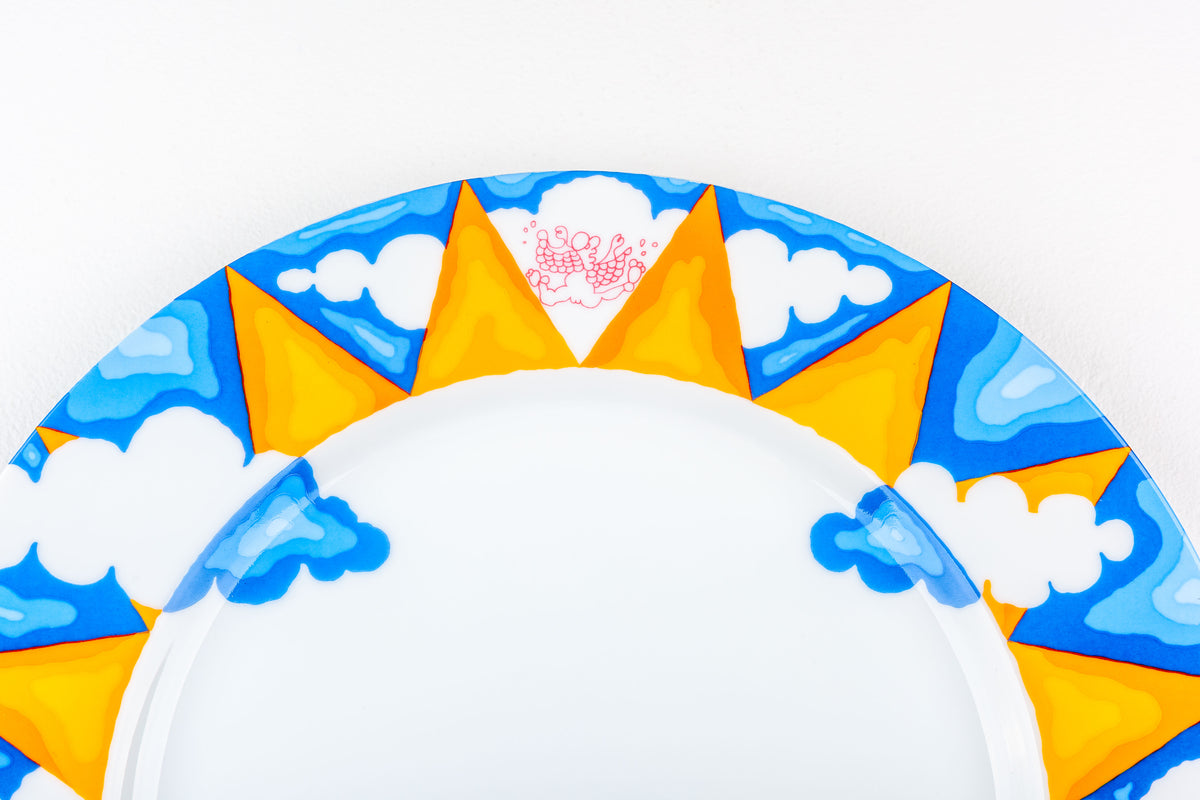
This plate was designed by Stanley Tigerman, an important Chicago figure in the architectural scene. The large buffet plate named 'Sunshine' was produced in 1985 by the important post-modern goods company Swid Powell in the United States. The design features a dynamic, sun-like motif with rays emanating from the plate's center, which remains plain white, allowing the border design to truly pop. The alternating blue and orange triangular shapes create a sense of movement and visual interest, suggesting the radiance of sunshine through a playful, graphic style.This piece, with its dimensions of 1 by 12 1/8 by 12 1/8 inches, is crafted from ceramic, which is both a traditional and durable material. The use of ceramic nods to the history of plate-making, while the design is distinctively modern. The piece is part of the permanent collection at the Art Institute of Chicago, which speaks to its significance in the design world and its recognition as a work of art in its own right. The Art Institute of Chicago houses this as an example of Tigerman's multidisciplinary reach and his influence on the design aesthetic of his time.
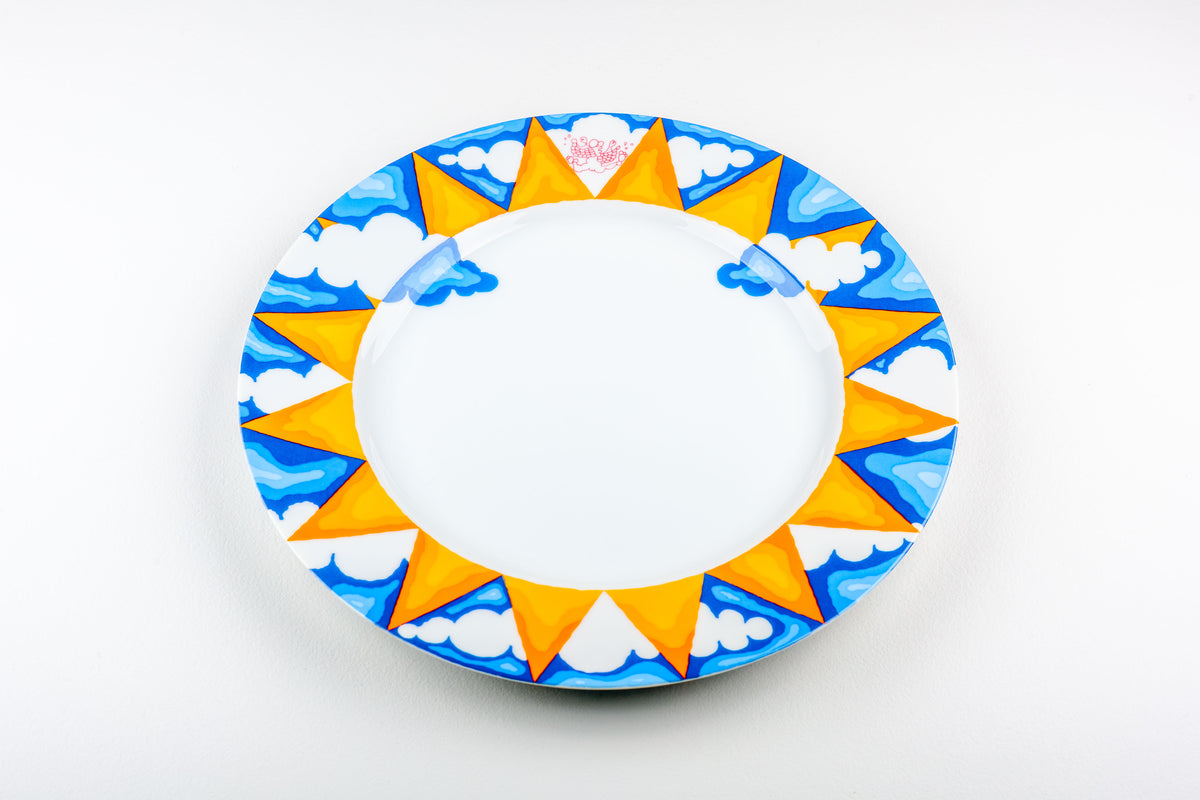
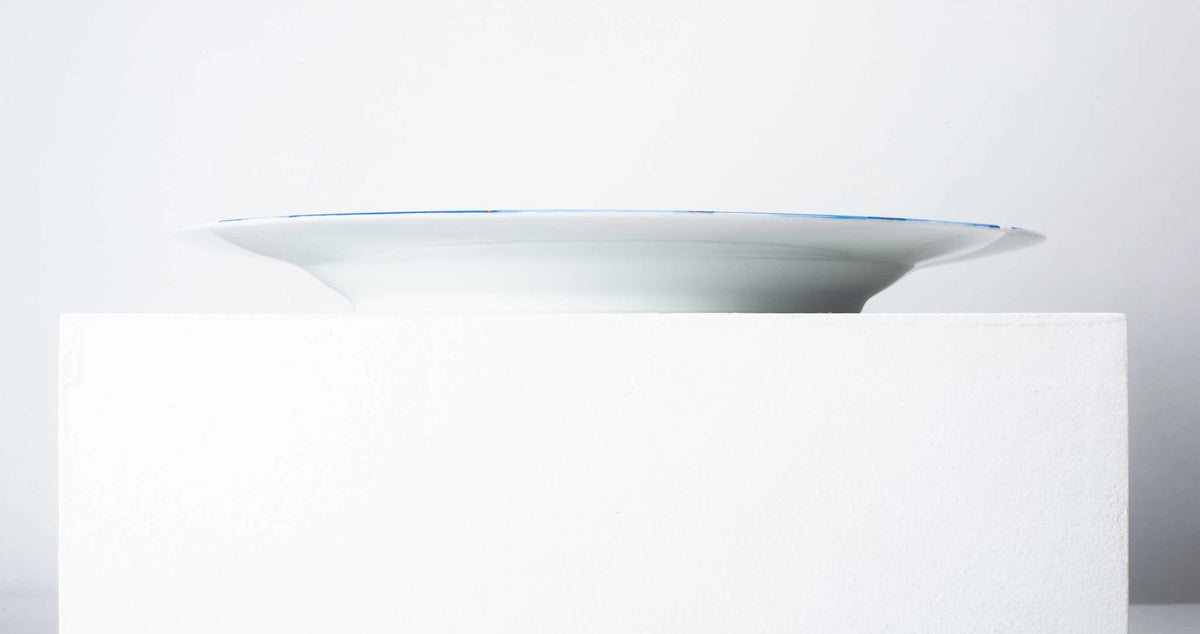
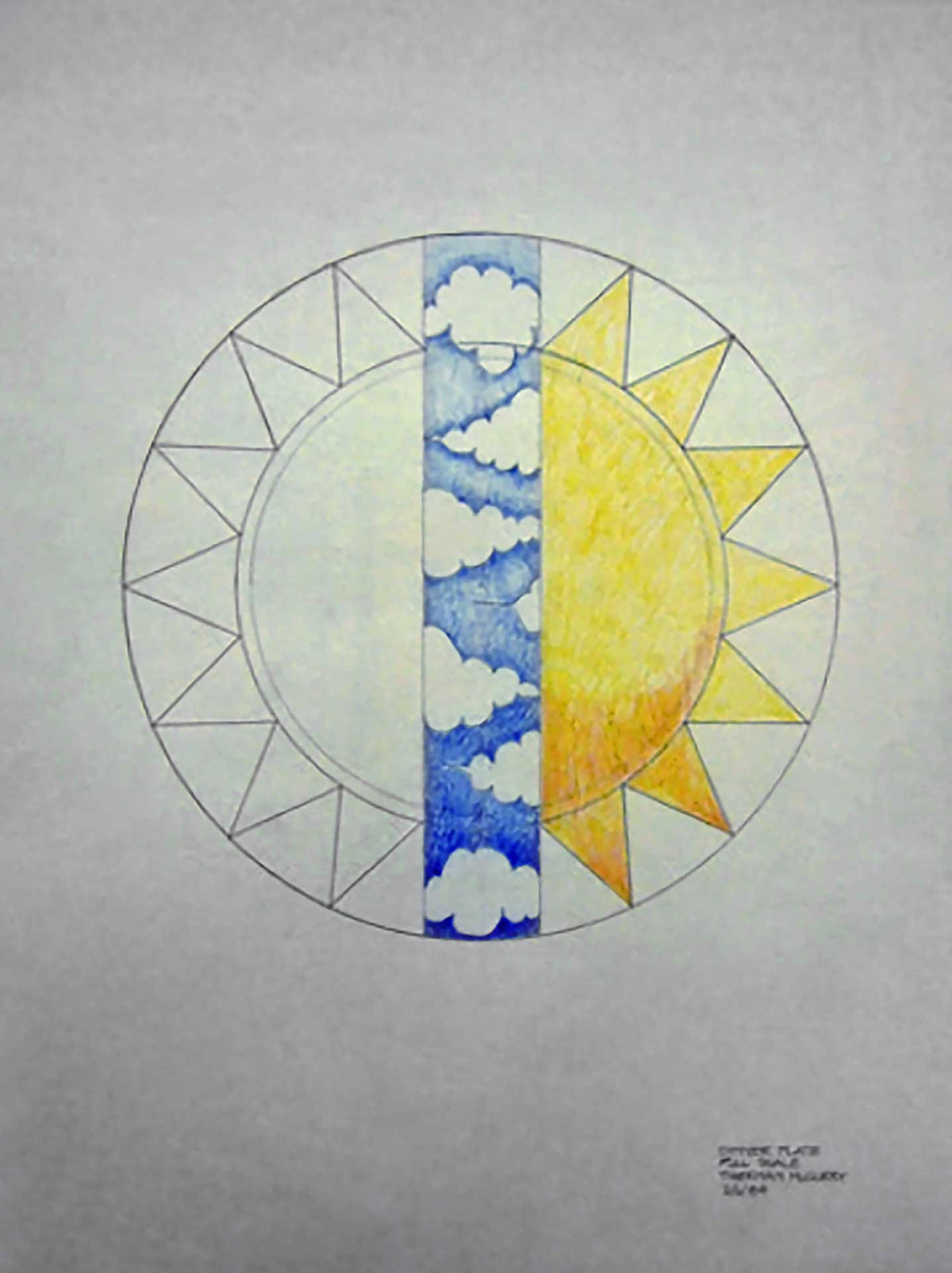
Stanley Tigerman, drawing for a plate
STANLEY TIGERMAN
This plate was designed by Stanley Tigerman, an important Chicago figure in the architectural scene. The large buffet plate named 'Sunshine' was produced in 1985 by the important post-modern goods company Swid Powell in the United States. The design features a dynamic, sun-like motif with rays emanating from the plate's center, which remains plain white, allowing the border design to truly pop. The alternating blue and orange triangular shapes create a sense of movement and visual interest, suggesting the radiance of sunshine through a playful, graphic style.This piece, with its dimensions of 1 by 12 1/8 by 12 1/8 inches, is crafted from ceramic, which is both a traditional and durable material. The use of ceramic nods to the history of plate-making, while the design is distinctively modern. The piece is part of the permanent collection at the Art Institute of Chicago, which speaks to its significance in the design world and its recognition as a work of art in its own right. The Art Institute of Chicago houses this as an example of Tigerman's multidisciplinary reach and his influence on the design aesthetic of his time.
STANLEY TIGERMAN
From the Art Institute of Chicago
Chicago architect Stanley Tigerman continuously experimented with the domestic form, with projects ranging from postmodern houses based on concepts of humor and allusion, to multifamily and low-income housing. His early work in the 1970s often employed simple modern structures coupled with playful, representational elements, like his car-shaped garage building of 1976.
Tigerman’s work in the 1980s and 1990s became more complex and socially invested, as seen in works like his own home, Lakeside, at once a barn and basilica, as well as his building for a demonstration housing project in Berlin.
As part of an ambitious, international redevelopment of an area bombed during World War II, Tigerman’s six-unit building recalls vernacular housing types and neoclassical German architecture and was “cleaved” in two halves by a vertical, modernist winter garden, a symbolic gesture at this West Berlin neighborhood adjacent to the soon-to-fall Berlin Wall.
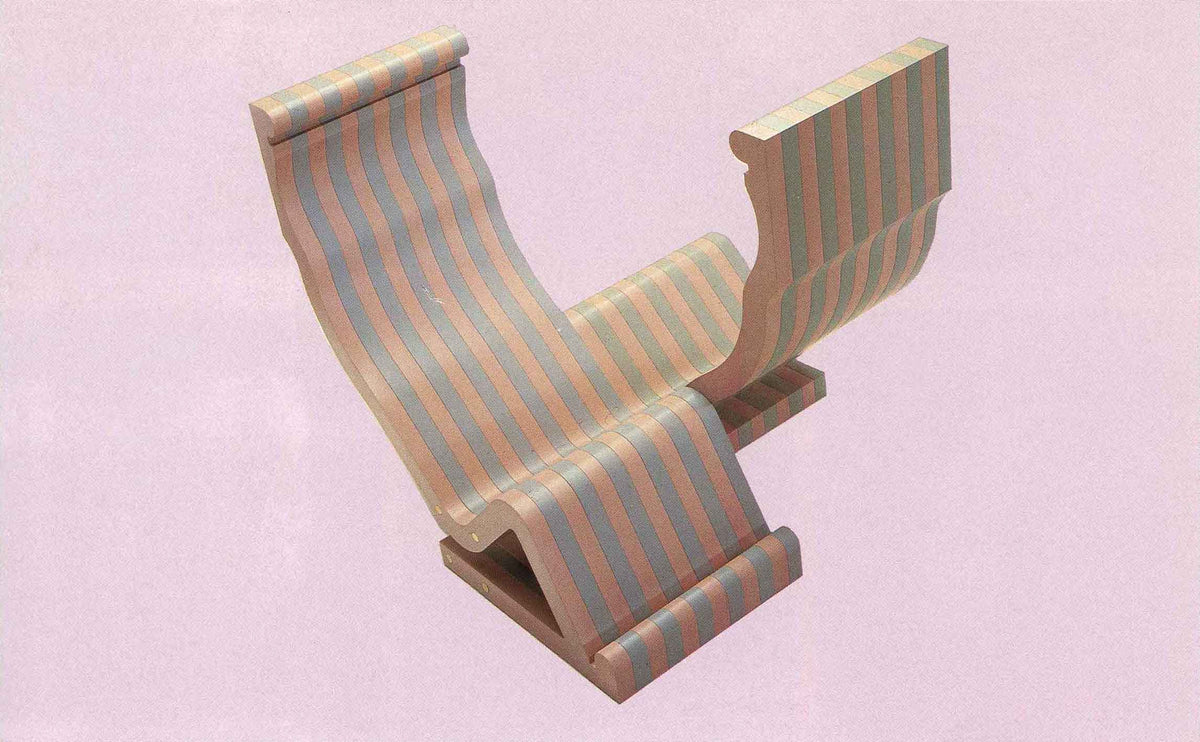
Stanley Tigerman, Tete a tete
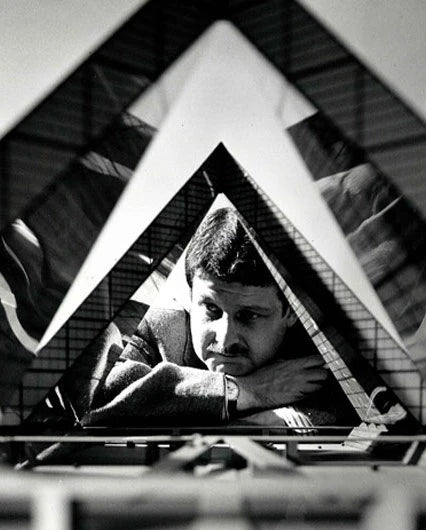
Stanley Tigerman, Instant City Model, 1966. Photo Balthazar Korab
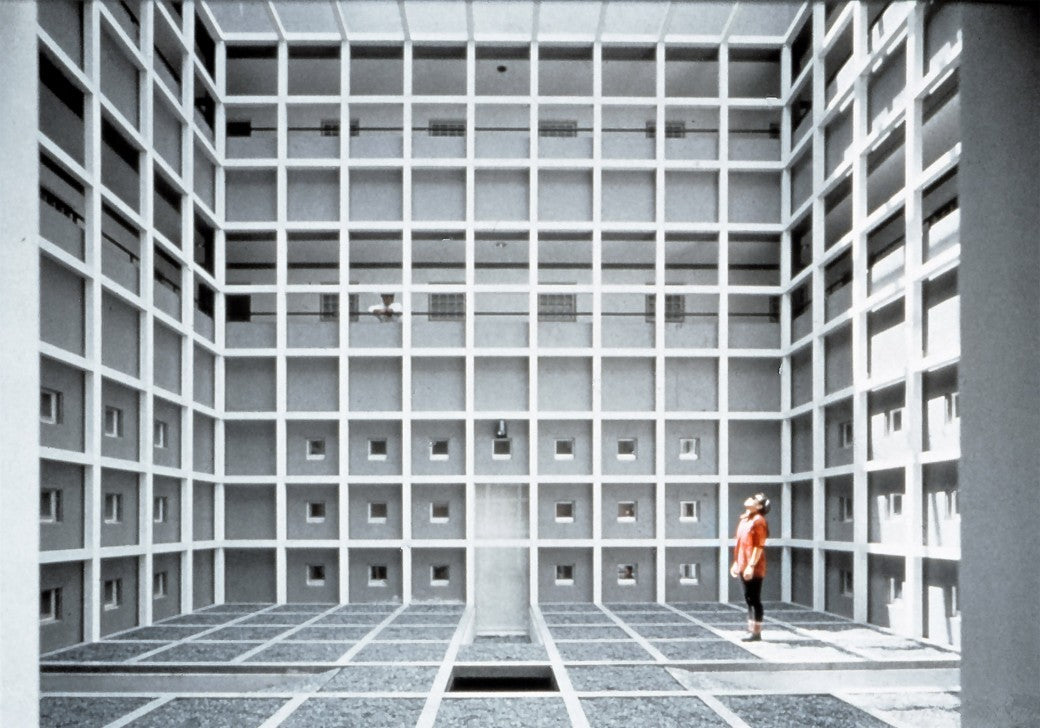
Fukuoka Momochi, Tigerman McCurry Architects
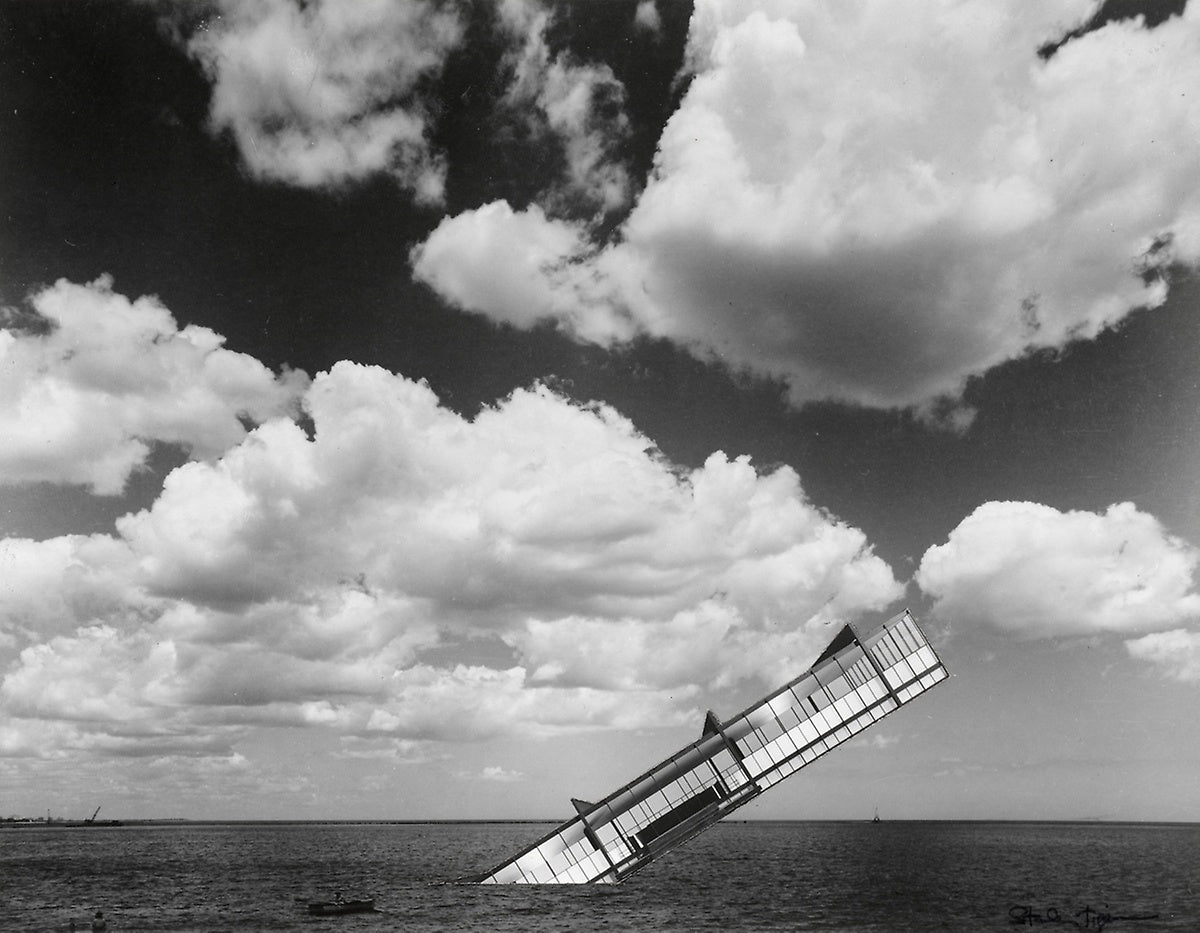
Stanley Tigerman, The Titanic, 1978, Photomontage on paper, Approx. 28 x 35.7 cm, Gift of Stanley Tigerman, 1984.802, The Art Institute of Chicago. Photography © The Art Institute of Chicago
Chicago architect Stanley Tigerman continuously experimented with the domestic form, with projects ranging from postmodern houses based on concepts of humor and allusion, to multifamily and low-income housing. His early work in the 1970s often employed simple modern structures coupled with playful, representational elements, like his car-shaped garage building of 1976.
Tigerman’s work in the 1980s and 1990s became more complex and socially invested, as seen in works like his own home, Lakeside, at once a barn and basilica, as well as his building for a demonstration housing project in Berlin.
As part of an ambitious, international redevelopment of an area bombed during World War II, Tigerman’s six-unit building recalls vernacular housing types and neoclassical German architecture and was “cleaved” in two halves by a vertical, modernist winter garden, a symbolic gesture at this West Berlin neighborhood adjacent to the soon-to-fall Berlin Wall.
